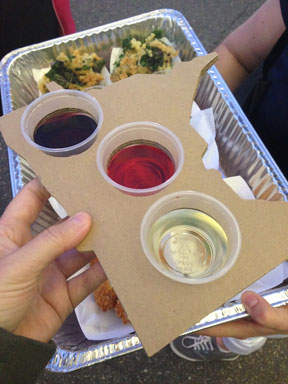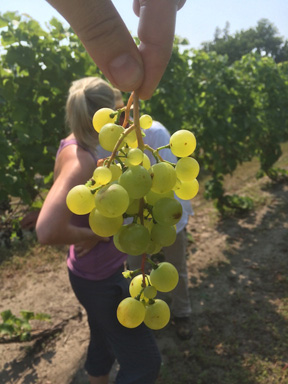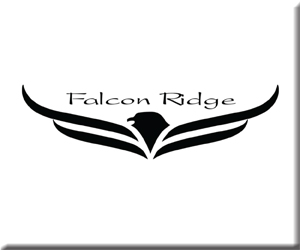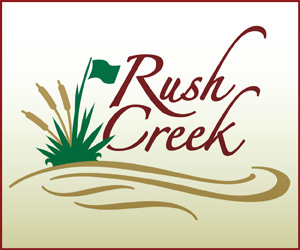Demystifying The World Of Minnesota Wine
By Leslee Miller
When most people think of enjoying a glass of wine, they generally tend to lean towards grapes that come from a species of grapevine called, Vitis Vinifera. You know, the grapes in your glass like: Sauvignon Blanc, Chardonnay, Pinot Noir or Cabernet. Although there are nearly 5,000 to 10,000 Vitis Vinifera varieties across the globe, many wine drinkers know just a handful of grapes when it comes to what folks actually drink. But did you know, that we as Minnesotans have our very own variety of grapes right here in our own backyard? Grapes like: Marquette, Frontenac, La Crescent and Frontenac Gris, just to name a few! But did you ever stop to think where they might come from or why they’re so different from the wine grapes that we drink on a daily basis? Uncovering its profile doesn’t necessarily have to be confusing as some of its grape names, so I thought I’d drop a little note this month setting some of the facts straight about this crazy little libation called: Minnesota Wine.
Vitis Riparia: A species of native American grapevine, common to places like the Midwestern parts of the United States, Quebec and Nova Scotia. Many of these grapevines are resistant to temperatures up to 57 degrees below zero! While I hate reminding Minnesotans to recall the artic depths of our chilly Midwestern climate, most understand the severity of temperature that exist throughout our winter season plunging as low as 35 to 60 degrees well below zero. So yes, while we can actually grow the European/Middle Eastern grapevine, Vitis Vinifera (mentioned above) here, our climate just does not allow for the plant to sustain itself well during our chilly winter months. One of the main issues we have with Vitis Vinifera is that it often does not ripen correctly, force itself to reach for the proper nutrients that a plant of its nature would need via our black illustrious soils, or maintain much of its original flavor due to our climate, soil and seasonal weather patterns. BUT, Vitis Riperia does! In fact, some of the grapes that have been created, right here at the University of Minnesota from this grapevine, are some of the hardiest grapes in the world surviving temperatures up to 33 degrees below zero.
Before moving into the profiles of some of these cold hardy grapes, one should know that because these grapes are coming from the Vitis Riparia grapevine and not of the Vitis Vinifera plant, that they are most likely NOT going to taste like those of its older ancestor. In fact, many of the grapes grown either wild from the vine or recently developed from the vine are much more acidic than those that many are used to like: Sauvignon Blanc, Chardonnay, etc. But, because of the various styles in which we’ve created many of these wines in the state, I think many Minnesotans assume that ALL MN wines are sweet. In fact, almost all of them are so exceptionally acidic that many inexperienced winemakers tend to ‘sweeten’ or over-ripen the grapes from their vines in order to try and achieve some balance to their wines, often resulting in an ‘over sweetened’ wine.
So, what’s the real truth behind why the scale of quality is so vast? One, let’s start with the fact that many of the more ‘commercialized’ wines that we drink in Minnesota have come from grapes developed at the U of M less than 20 years ago, making our state’s wine industry a very young one. One of the very first grapes to be developed by the university was Frontenac in1996. Later, grapes like Marquette (2006), La Crescent (2002) and Frontenac Gris (2003) followed leaving us with a number of new grapes to create wine with, but also a wide variety of table grapes developed by a land loving farmer by the name of Elmer Swenson, that came much earlier. It just so happens that we’re making wine out of both varieties of wine here in Minnesota!
So, getting back to the question at hand: What about Minnesota wines? First thing that I ask class attendees, wine enthusiasts and students when they scrunch up their noses at me and ask: Why don’t these wines taste like I want them to? My answer: Why are you comparing bananas to apples? One thing to understand about Minnesota wines is that they are never going to taste like the wines that currently grace your everyday wine-drinking tables at home (unless you’re a MN wine enthusiast!). From another viewpoint…If you took a trip to Spain and you knew the wine growing regions were famous for producing a red wine from a grape by the name of Tempranillo, why would you ask for a Frontenac? If we’re not known for Chardonnay or Pinot Noir, why would your palate expect to taste these grapes or their profiles from a Minnesota wine?
My best tip for anyone looking to explore MN wine country and its grape varietals is to get to know the wines a little bit better. For one, ask questions when visiting some of the local wineries. Ask the tasting room attendant what a typical La Crescent, a Frontenac or a Frontenac Gris is supposed to taste like. Once you start to line up how they’re supposed to taste, then maybe you’re expectations of what you’re about to enjoy are better managed. But again, know that there will be a wide variety of stylistic variations. Because our MN wine industry is so young, we are still dealing with a number of growers, winemakers and winery owners that are still also very new to creating and educating consumers about the wines that are currently being made in the area. My advice, go to a few of the wineries that have been at it a while like: Crow River Winery, St Croix, Winehaven, or Wild Mountain Winery. Or better yet, follow the results of the Cold Climate Competition that takes place every August (I’m a yearly judge for the competition, tasting over sometimes 300 wines in one day for the competition). Seek out some of the winners from the competition, and taste a few of the medal winners. Chances are that these are some of the best examples of each vintage. We’ve found that as the state develops grapes better, and in turn learns more about how to better create wine from them – that the state of Minnesota is making better wine every year!
So my question to you is: What do you have to lose? Do you like wine or do you like WINE (giggle)? Get on out there and try a few on for yourself! And don’t forget, the state hosts many events throughout the year that allows fellow grape lovers to explore the world of Minnesota wine for a small fee or even FREE! Events like: Savor Minnesota, the Minnesota State Fair through the MN Wine Country Building and the Minnesota Grape Growers Association’s Passport to Minnesota Wine Country.
So next time you reach for a glass of wine think…why not Minnesota?
Clink, Clink and Enjoy!































